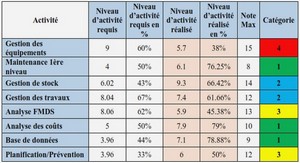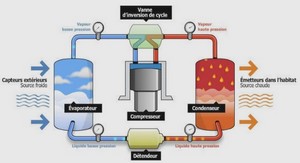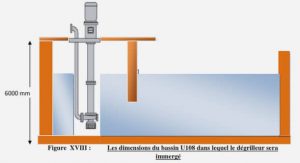Modélisation numérique et expérimentale des
phénomènes de givrage par accrétion de neige collante
Experimental approach to investigate wet snow accretions
Experimental analysis of the aerodynamic aspect of wet snow accretions: cylinders role through a Stokes number and coefficientThis chapter is dedicated to the experimental approach undertaken in the climatic wind tunnel to study the wet-snow accretion process. As presented in the literature review, wet snow accretions are characterized by three aspects: aerodynamic, mechanical and thermal one. To synthesize the influence of the three aspects, a dimensionless coefficient is here presented and discussed. The influence on the accretions of particle is investigated. The liquid water content of particles is tuned by varying the ambient temperature 𝑇 in the wind tunnel as seen in chapter 2. The aerodynamic aspect is investigated by analyzing the coefficient for three cylinders of different diameters. Moreover, a set of boundary conditions are measured for further analysis and numerical modeling: mean flow speed 〈 〉, turbulent intensity and integral length scale of the snow flow. The data acquired on accretion forms give also a database with which validate the accretion model presented in chapter five. Experimental approach to investigate wet snow accretions. 44 An important part of our work has been to set up an experimental procedure to study the wet-snow accretion due to the lack of a universal procedure in the climatic wind tunnel. In such a large wind tunnel, it was very important to build a procedure leading to reliable results. Moreover an important work has been done to ensure the reproducibility of the results. To achieve this goal all the parameters of the experimental study have to be understood and controlled.
Climatic conditions reproduction: climatic wind tunnel.
The wind tunnel facility of C.S.T.B. was built to conduct tests at full scale. It is possible to investigate the wind effects on many kinds of structures in conjunction with different climatic conditions: rain, snow, dust, sun, icing. Moreover the facility is adapted to study the aerodynamic of vehicles, the ventilation of building and the performances of materials subjected to extreme climatic conditions. The wind tunnel is constituted of two parts. The first one is called the “dynamic circuit”. It is operated since (the green ring in Figure 33). The second part, called “thermal circuit” is operated since (the purple ring in Figure 33). The latter unit permits to reproduce warm and cold environment from down to . This large range of temperature allows to reproduce several climatic conditions among which wet-snow storms. Figure 33. Jules Verne Climatic Wind Tunnel facility. The thermal circuit includes a six blades fan of . The fan can reach limited to when the temperature inside the chamber is less than – . The test chamber is long, wide and high. Previous tests, conducted with only air flow, have characterized the chamber with a turbulence intensity of and an integral length scale of using air as a fluid. The flow inlet has a variable section: from to . The maximum reachable speed depends on the inlet section. For flow speed can go up to , when test section is the flow speed can reach . The heat exchanger allows to adjust temperature from to with a temporal gradient of . The hygrometry can be adjusted from to . A completed description of the cooling systems can be Chapter 3 45 found in [1]. A set of turning vanes are installed upstream the flow inlet to assure a straight flow in the test chamber (Figure 34). Figure 34. Jules Verne Climatic Wind Tunnel: thermal circuit. 3.2 Wet snow production: snow gun As seen in literature review there are three types of snow guns, the one utilized here to produce artificial snow presents an internal mixing chamber. This means that water and air are mixed inside a chamber and then expulsed at high pressure: from to 𝑎 which means approximately [1]. The gun air/water ratio can be adjusted to obtain a more or less wet snow [1], as a consequence, tuning this ratio is another approach to adjust the of particles. However the gun air/water ratio influences the particle distribution of the snow gun [1]. Therefore, to ensure the same snow gun particles distribution for all tests (Figure 35) and, due to the difficulties to adjust the precisely through the gun air/water ratio, the air/water ratio was kept unchanged during all the tests. The flux of air/water mixture has been set-up to . Figure 35. Snow gun volume particle distribution [2]. Experimental approach to investigate wet snow accretions. The particles distribution (Figure 35) was measured during a precedent test campaign held in C.S.T.B. in 2007 with a MALVERN Spraytec [2]. The measurements have been taken as Figure 36 with the snow gun placed on a side of the wind tunnel. The snow gun was placed one meter ahead of the MALVERN. One is aware that the distribution of Figure 35 does not correspond exactly the distribution at the exit of the snow gun. Nevertheless, due to the high particles concentration it was impossible to approach more the MALVERN to the snow gun. Figure 36. MALVERN position [2]. The measurement principle is based on laser diffraction. This means that the particles size distribution is evaluated by measuring the angular scatter of a laser beam which passes through the dispersed phase (Figure 37). The angular scattering intensity is then analyzed to calculate the size of the particles. Figure 37. Measurement principle of laser diffraction. As shown in Figure 37 the angular scatter is a function of the particles diameter: small particles scatter the laser beam more than larger particles. To characterize a distribution of the dispersed phase the Sauter diameter ∑ ∑ ⁄ and De Brouckere diameter ∑ ∑ ⁄ are often utilized. The first one is the surface area moment mean, the second one is the volume moment mean and it is also called the mean volume diameter (MeanVD). These diameters indicate around which particle diameter the (surface area or volume) distribution is centered. In our case the particle distribution of the snow gun is characterized by a and . Due the fact that our studies are focused on the mass of the snow accreted, the diameter is most appropriated to deal with. The particles distribution will be taken into account in chapter four while modeling the particles stochastic dispersion model, it will also be used to characterize the particle distribution close to the cylinder. Due to the fact that the snow gun has a transition time during startup before the water flux becomes stable, a trapdoor was installed facing the snow gun during the whole test campaign (Figure 38). This expedient has allowed to reduce noticeably the quantity of snow spread in the test chamber before the actual beginning of the tests which can accumulate and perturb the flow. Moreover it limited the quantity of snow in the vicinity of the temperature and humidity sensor of the wind tunnel which can perturb the regulation system during the test. Thanks to the trapdoor a good part of the mixture flowed away under the test section ground. When the stability of the water flux was reached, the trapdoor was then lowered to permit a fully diffusion of the flow. Figure 38. Function principle of the trapdoor.
Test campaign devices to study wet snow accretions.
Investigation of the aerodynamic aspect: test structure.
The test structure was built in the C.S.T.B. workshop. It consists in a main part made of two vertical bars that hold horizontally one PVC cylinder long. To investigate the aerodynamic aspect of the accretion three cylinders of various diameter were tested: , and . The cylinder was placed above the ground to ensure a uniform snow flow outside the boundary layer (Figure 39). Experimental approach to investigate wet snow accretions. 48 Figure 39. Air boundary layer at the structure location: from the inlet. The boundary layer measured without snow particles into air was evaluated using a “Turbulent flow instruments” cobra probe at a data output frequency of . The measurements have been made in a configuration without snow gun to avoid flow perturbations. Considering the homogeneity of the speed values at and of height, the flow speed reference to evaluate the profile is the average between the speeds at these heights. Three runs guaranteed the reproducibility of the test. Measurements above are not available, but analyzing the boundary layer profile obtained, one can suppose that at above ground the flow can be considered uniform. The cylinder was protected (Figure 40.a) by a removable cover to safeguard the cylinder during the startup of the snow gun (Figure 40.b). (a) (b) Figure 40. (a) A front view of the test structure with its principal features and dimensions. (b) The cover which protects the cylinder.
Estimation of the incoming snow flow rate: snow collectors
A couple of snow collectors with a diameter of 8cm were installed on both sides of the test structure. One collector placed at from the ground and the other one at to ensure a full coverage of the impacting area of the cylinder (Figure 41.a). Snow collectors permitted to measure the mean incoming snow flux 〈 〉 (38). The mean incoming flux will be a part of the evaluation of the experimental coefficient and of the accretion model presented in chapter five. 〈 〉 〈 〉 (38) Where 〈 〉 is the mean snow mass accumulated inside the four snow collectors, the snow collector area and the duration of the test. A similar approach to measure the snow flux was also undertaken by Font et al.[3]. This device is made of tissue characterized by a porosity of : the air pass through the tissue while the snow remains collected inside. The snow collectors were mounted on two vertical poles placed 1 meter ahead from the structure. The collectors were equipped with a pincer and a horizontal rod to maintain the collectors horizontals and straights (Figure 41.b high) during the tests. This approach guarantees that the snow accumulated inside the collector did not obstruct the inlet by closing down the porous tissue (Figure 41.b low). (a) (b) Figure 41. (a) Front view of the test structure with the four snow collectors. (b) Fide view of the snow collectors. This configuration ensures an acceptable homogeneity of snow flux for each collectors during all a test day as shown in Table 1. Here is reported, for each flux of the four collectors, the percentage difference with respect to the mean flux of the day 〈 〉 . This means: ( 〈 〉 ) 〈 〉 ⁄ . The duration of the test was . In the evaluation of the snow flux, one has to consider the errors committed during the sampling of the snow and while weighting the snow. In this case an error analysis has evaluated at about the uncertainty committed while sampling the snow mass. One can suppose that this uncertainty is mainly related to the difficulties to completely empty the snow collectors and to the difficulties to have exactly the same Experimental approach to investigate wet snow accretions. 50 flow uniformity during all the tests. The uncertainty associated to the balance used to weight the snow is . Tests have shown that the mean snow mass gathered by the snow collectors is about 〈 〉 which means a mean uncertainty of snow sampling of . Seeing the error associated to the balance, one can suppose that the most important error contribution to is given by the sampling process and the flow homogeneity. Table 1. The snow flux for each collectors for three periods in a test day. beginning middle end high left low left high right low right Moreover one can wonder if the snow particles, while approaching the snow collectors, can be deviated by the flow close to the snow collectors increasing the measurement error. Taking as a reference particle the of Figure 35 distribution, it is possible to estimate the behavior of the particle close to the snow collector through a Stokes number. As will be shown later in this chapter the is characterized by a . The evaluation of characteristic time of the flow which surrounds the collector 〈 〉 leads to a Stokes number ⁄ . With , the diameter of the collectors and 〈 〉 the mean flow speed. This value of Stokes number, as seen in chapter two, means an inertial behavior of particles: therefore one can preliminary suppose that particles are not so much deviated by the flow close to snow collectors. As a consequence of this analysis, one can suppose excludable the influence of the flow around the snow collectors on snow particles which could perturb the snow collector filling. Test duration analysis. Being aware that a flow blockage of the collectors can happen when measuring the snow flux with this simple system, a series of pre-tests to study the optimal test duration was performed. Three tests of 5,10 and 15 minutes showed how the flow blockage can arise above 10min (Figure 42 – black circle). The test is based on the evaluation of the mean snow flux between the four collectors: 〈 〉, defined in equatio.
CHAPTER 2 LITERATURE REVIEW ON WET SNOW ACCRETION PROCESS |






